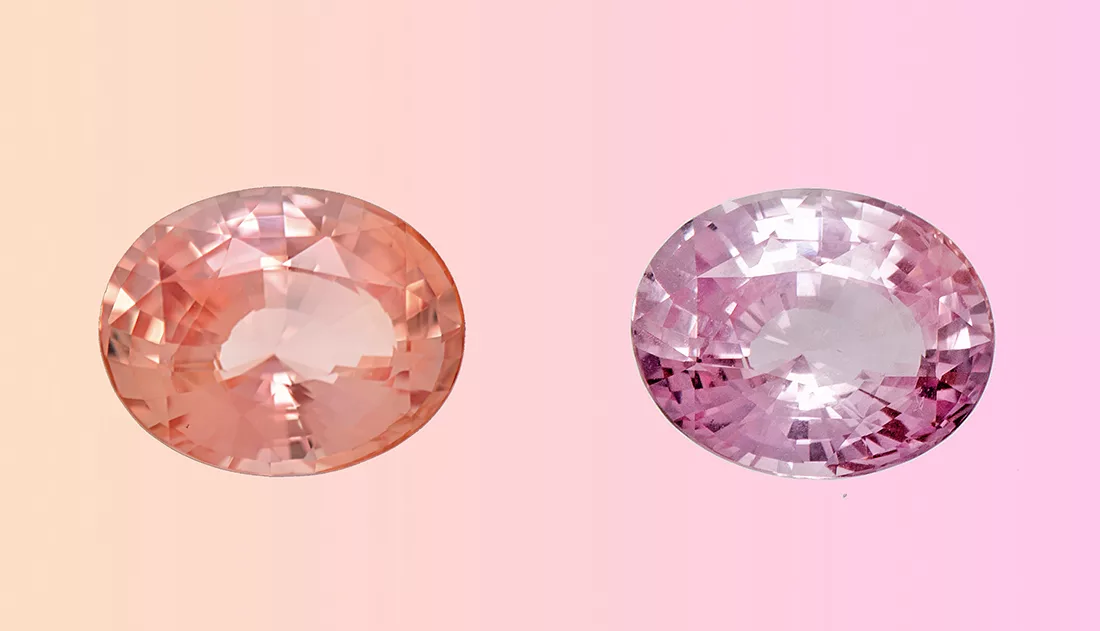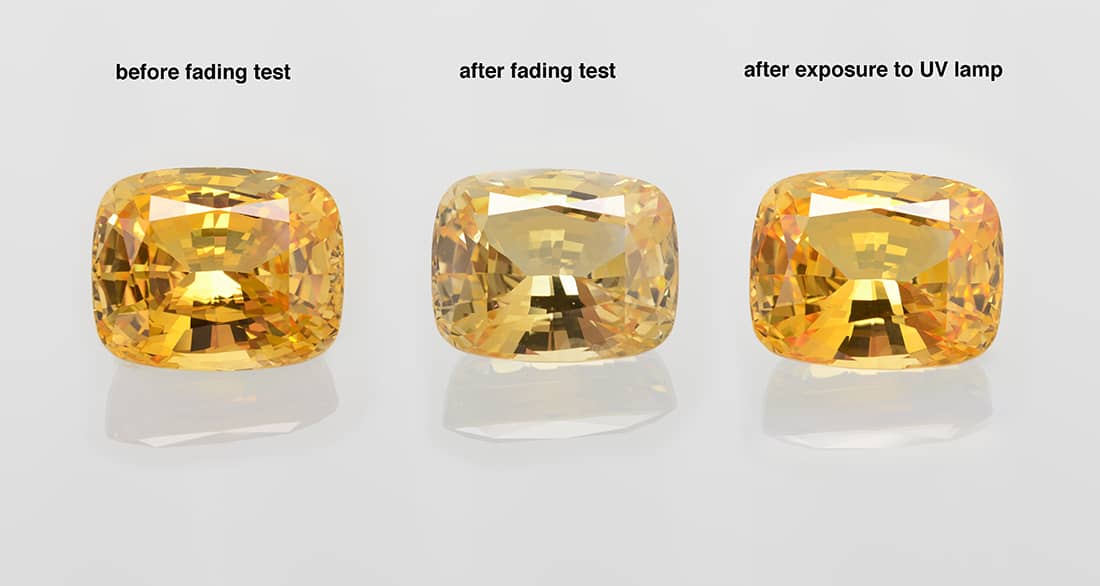Colour Stability of Gems
As is known in the gem trade, the colour of certain gems may change when exposed to sunlight over a longer period of time. This is due to the presence of so-called unstable colour centres (a type of defect in the crystal structure that can absorb light and thus result in colour, that can be present both in stable or unstable form). This effect may occur naturally in certain gems or be the result of an (irradiation) treatment.
Corundum as an example
After prolongated exposure to sunlight, an unstable colour centre in corundum may become inactivated and consequently result in a reduction of colour saturation, as in certain yellow sapphires, or in a shift of colour as in certain fancy sapphires of padparadscha-like colour. Consequently, SSEF has since many years been testing the colour stability of yellow sapphires and padparadscha sapphires submitted to the lab.

How is the colour stability of corundum tested?
Based on current scientific knowledge, the colour stability of gemstones can be quite easily tested – even by a well-trained gemstone dealer. Before testing, the colour of the gemstone has to be very well defined (e.g. with Munsell colour charts, Color CodexTM, or other colour matching systems). The stone is placed on a metallic reflecting plate and then exposed for several hours (minimum 3 hours) to a strong fibre optic light source (halogen). After this, the colour is again meticulously checked. Corundum with an unstable colour centre will display now a (slightly to distinct) shift in colour or saturation. To be very clear, this is actually the stable colour of the stone.
At SSEF, any noticeable change/shift is also confirmed by UV-Vis absorption spectra and/or colour measurements taken before and after the colour stability test. For yellow sapphires and padparadscha-like fancy sapphires, the now inactive unstable colour centre can be activated again usually by UV radiation, resulting in a shift of colour to a more saturated and orangey or yellow hue. To be very clear, this “activated” colour is actually the unstable colour of the stone.
To do so, the stone is subsequently placed table down directly on a strong UV light source (in a dark box) and exposed for about 10 minutes to UV radiation. Again, the colour needs to be meticulously determined to check if any change has occurred. This effect is known in scientific gemmological literature as reversible photochromism, or tenebrescence.

For more information on colour stability in fancy, padparadscha and yellow sapphires: LINK
In line with our full disclosure policy, we detail here the wording used on our reports.
- Case 1: Padparadscha/yellow sapphire with no or very minute change of colour during colour stability testing.
Wording used on SSEF report: Colour stability test performed: This colour is considered stable. - Case 2: Padparadscha sapphire with a limited change (remaining within padparadscha range) in colour during colour stability testing. Wording used on SSEF report: Colour stability test performed: Although a slight colour shift was observed (slight reversible photochromism), the colour of this gemstone is considered to be in the padparadscha colour range.
- Case 3: Fancy sapphire/yellow sapphire with an obvious change of colour out of padparadscha range or distinct change of yellow colour saturation. Wording used on SSEF report: Colour stability test performed: This fancy sapphire/yellow sapphire exhibits a colour shift known as reversible photochromism (tenebrescence). This is a natural phenomenon that occurs occasionally in fancy sapphires/yellow sapphires.
Important to know:
In such a case, the term padparadscha is excluded on our reports (in line with LMHC infosheet 4). However, an additional information letter is issued together with the SSEF report, explaining this reversible photochromism effect in more detail.
For more information on colour stability in rubies: LINK